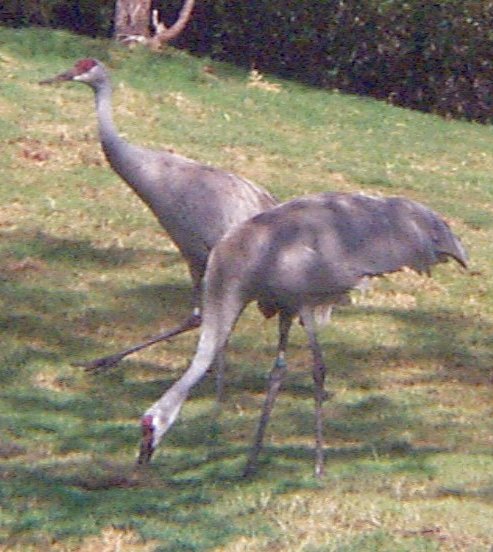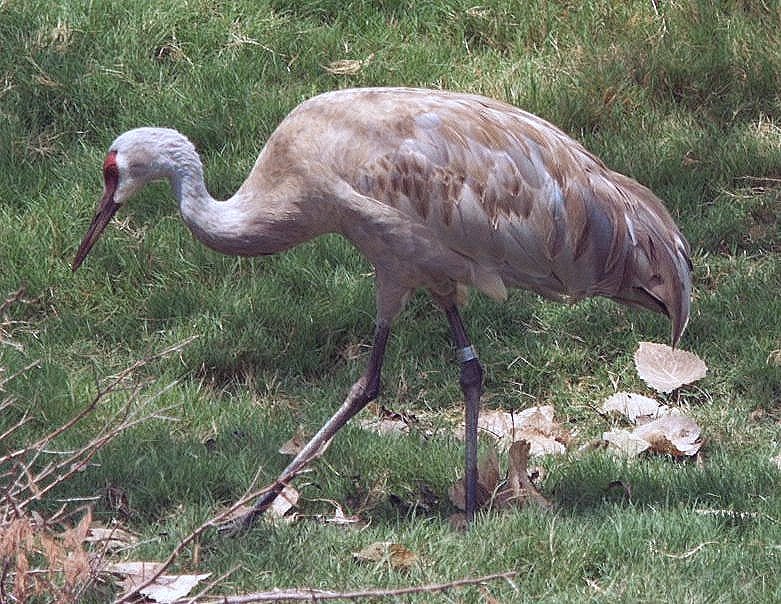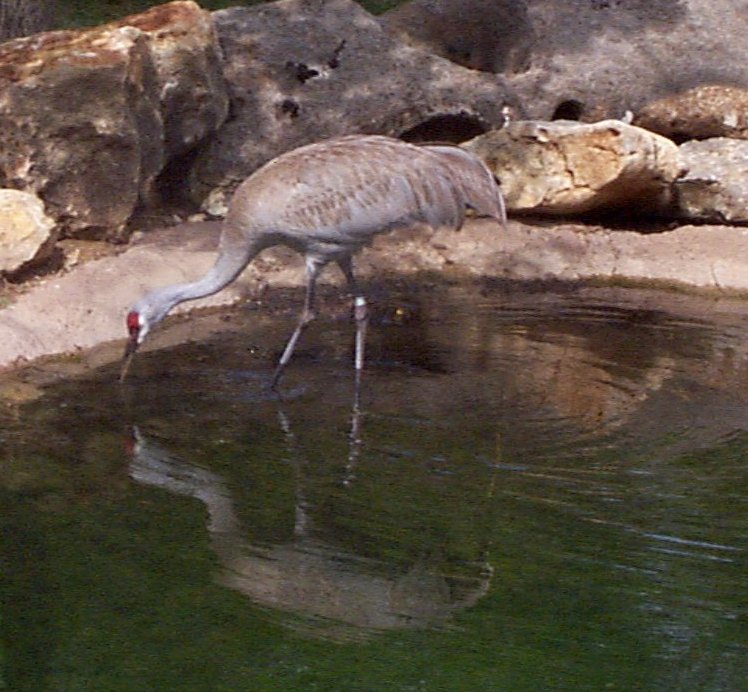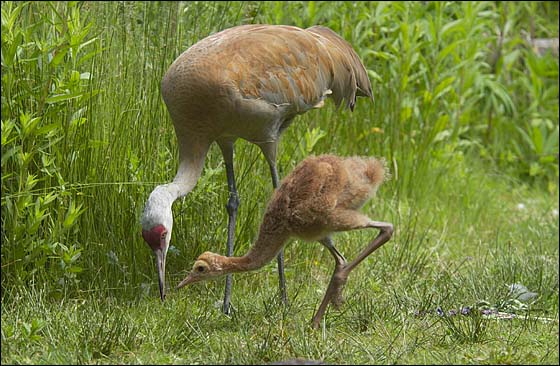Name: Sandhill Crane |
Scientific name: Grus canadensis |
 |
Range: Arctic and sub-arctic regions through Northern Canada from Baffin Island to the Yukon, coastal and interior areas of Alaska, and Northeast Siberia. Winters in East New Mexico, Northwest Texas, the Texas coast and parts of Northern Mexico |
| Habitat: freshwater wetlands, shallow marshes or lakes, and wet meadows | |
| Status: Lower risk (Least concern) | |
| Diet in the wild: frogs, rodents, insects, bulbs, seeds, and berries. While on migration, they also eat waste grain and field animals. | |
| Diet in the zoo: omnivore diet | |
| Location in the zoo: Texas Wild! (High Plains and Prairies) |



